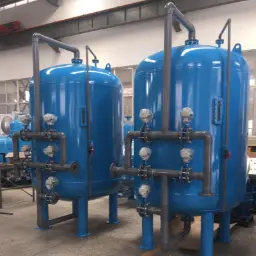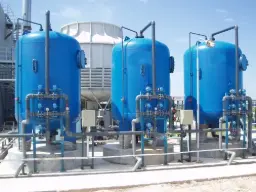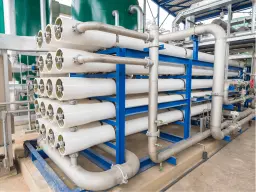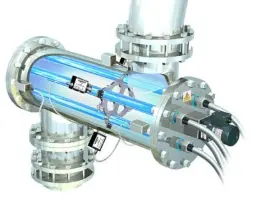Rainwater Harvesting and Treatment
Rainwater harvesting has gained significant attention in recent years as communities and businesses seek more sustainable, cost-effective, and eco-friendly ways to manage water resources. By capturing rainfall from rooftops, pavements, and other catchment areas, it is possible to reduce the strain on municipal water supplies and lower utility bills. Yet, merely collecting rainwater is not enough; ensuring its safety and suitability for various applications often requires additional treatment steps. Depending on the intended use—whether for irrigation, industrial processes, or even potable supply—rainwater may contain contaminants such as sediment, organic matter, and microbial pathogens.
A well-designed rainwater harvesting system typically incorporates storage tanks, filtration, and, in some cases, disinfection processes like UV or chlorination. Advanced treatment methods, including ultrafiltration or reverse osmosis, can make harvested water pure enough for higher-value applications. Besides reducing freshwater demand, rainwater harvesting offers added benefits like flood mitigation, groundwater recharge, and enhanced resilience during droughts. Properly treating and using this resource can significantly advance water conservation goals, particularly in regions where traditional water sources are scarce or under stress.
Filtox specializes in integrated rainwater harvesting and treatment solutions that cater to a wide range of needs—from residential irrigation systems to large-scale commercial facilities. By incorporating state-of-the-art filtration and disinfection technologies, we help clients harness rainwater in a safe, efficient manner, all while reducing their environmental footprint. In an era of mounting climate challenges, sustainable water management practices like rainwater harvesting are no longer just an option; they’re an essential part of responsible resource stewardship.
Applications of Rainwater Harvesting and Treatment
- Irrigation and Agriculture: Provides a reliable water source for farming, reducing reliance on groundwater and municipal supplies.
- Industrial Use: Supports cooling systems, manufacturing, and cleaning processes, lowering operational water costs.
- Potable Water Supply: With proper purification, harvested rainwater can be made safe for drinking.
- Stormwater Management: Helps reduce urban flooding and replenishes groundwater sources.
- Domestic Non-Potable Use: Used for toilet flushing, laundry, and landscaping, cutting household water consumption.
Related Products for Rainwater Treatment

Pre-Filtration
A sediment filter targets finer particulates, such as silt, sand, and organic debris, improving water clarity. Multiple filtration stages—coarse to fine—can be used depending on the end application and water quality goals.

Activated Carbon Filtration
Activated carbon effectively adsorbs organic compounds, odors, and certain chemicals that can affect water quality and taste. This step is especially useful if the harvested rainwater is intended for indoor uses like washing or, with additional treatment, for potable supplies.

Reverse Osmosis (RO)
or higher-grade uses—such as drinking water or sensitive industrial processes—advanced membrane filtration can remove dissolved solids and most pathogens. Reverse osmosis systems may be employed where extremely pure water is required.

UV and Ozone Disinfection
Microbial contamination is a primary concern in rainwater. UV disinfection deactivates bacteria, viruses, and protozoa without altering the water’s chemistry. Alternatively, chemical treatments like chlorine or ozone may be used for larger or more demanding applications.
Advantages of Rainwater Harvesting and Treatment Systems
Reduced Dependence on Municipal Supplies : By providing an alternative or supplemental water source, rainwater harvesting eases pressure on local water utilities and can lower monthly bills.
Environmental Benefits : Harvesting and properly treating rainwater helps mitigate stormwater runoff, thereby reducing soil erosion and flood risks. It also promotes groundwater recharge in some setups.
Versatility of Use : Treated rainwater can serve multiple needs—irrigation, toilet flushing, laundry, cooling towers, and even drinking water—depending on the level of purification.
Cost Savings : While initial capital costs exist, long-term savings on water bills, along with possible government incentives or rebates, often offset the investment. Reduced strain on conventional water resources can also lead to lower infrastructure costs for communities.
Enhanced Resilience : In regions prone to drought or irregular rainfall, having a rainwater system can provide critical backup supplies, supporting continuous operations or essential services.
Challenges and Solutions
Challenge: Seasonal Variability in Rainfall
Solution: Properly sizing storage tanks and employing water-efficient strategies ensures an adequate supply throughout drier periods. In some cases, systems may incorporate backup connections to municipal supplies.
Challenge: Contamination from Roof Surfaces
Solution: Gutter guards, first-flush diverters, and sediment filters remove most debris and contaminants. Advanced filtration and disinfection are added for higher-quality requirements.
Challenge: Microbial Safety
Solution: UV sterilization or chemical treatment like chlorine, combined with routine water quality testing, helps maintain microbiological integrity in the storage system.
Challenge: High Initial Investment
Solution: Government grants, tax incentives, and long-term utility savings can make rainwater harvesting financially attractive. Phased or modular installations can also spread out costs over time.
Challenge: Maintenance and System Monitoring
Solution: Automated controls and real-time sensors can track water levels, quality indicators, and equipment performance, alerting operators to any issues before they escalate.
Frequently Asked Questions (FAQs)
Is rainwater safe to drink without treatment?
Generally, no. Raw rainwater can contain pathogens, debris, and chemical pollutants. Adequate filtration and disinfection are essential if intended for potable use.
How much rainfall do I need for a functional system?
Even in moderate rainfall regions, a well-planned system with sufficient storage can provide a meaningful water supply. Rainfall data and roof catchment area calculations help determine optimal tank size.
Can I use this water for industrial processes?
Yes. Many industrial applications—like cooling tower makeup or equipment wash-down—can utilize treated rainwater, often achieving significant cost savings and resource efficiency.
What if my region experiences long dry seasons?
A larger storage capacity or an integrated municipal backup ensures uninterrupted supply. Water-saving practices and efficient usage strategies further improve system reliability.
How often should the system be maintained?
Maintenance schedules vary by component. Sediment filters may need replacement every few months; UV lamps typically last a year or more. Regular inspection of gutters, tanks, and plumbing lines is recommended for optimal performance.